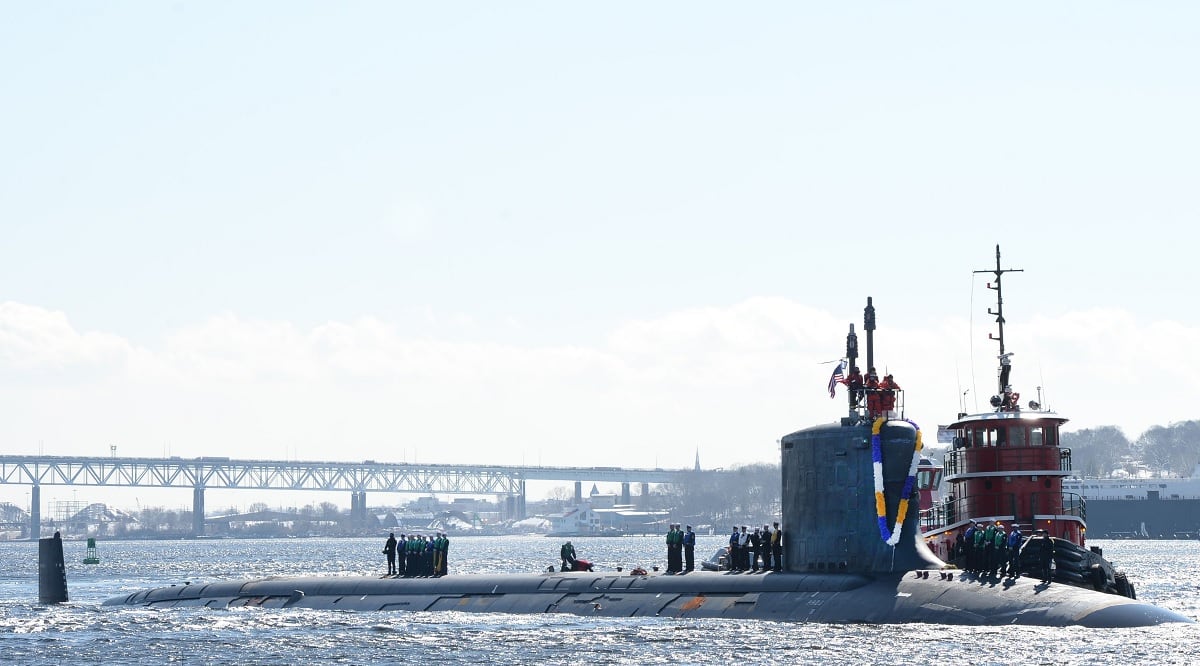WASHINGTON — Despite howls of criticism from Congress over the Navy’s seven-ship budget request earlier this year, the Senate Armed Services Committee’s markup of the National Defense Authorization Act stopped short of adding extra ships. Instead, lawmakers are opting to authorize the purchase of long-lead-time materials to keep the industrial base healthy.
With submarine builders under strain from the coronavirus pandemic and a dearth of suppliers, Congress had sought to add a second Virginia-class submarine. But now the SASC has used its annual defense policy bill to authorize about $472 million for long-lead procurement “so they can be ready to go, if not this year, than at the next opportunity,” Sen. Jack Reed, D-R.I., the committee’s ranking member said Thursday.
The strategy of authorizing long-lead-time materials, designed to keep steady business to critical suppliers and make canceling a ship that Congress has already spent money on more painful, was one the SASC used in other places as well.
The strategy of authorizing long-lead-time materials is designed to maintain steady business for critical suppliers. It also has the benefit of making it difficult to cancel a ship on which Congress has already spent money. Several programs have already benefited from long-lead-time money, and for its part, SASC is looking to authorize money to the Arleigh Burke-class destroyer program, the amphibious assault ship program and the San Antonio-class amphibious transport dock program.
RELATED

On the submarine front, the president’s budget requested only one Virginia-class sub for fiscal 2021 ,and staffers said fully funding a second sub would be unwise because the shipyard would be unable to use the money in a single year given the workload.
“The other issue too is the shipyards are in the process of not only building the Virginia class, but Columbia class is also coming on,” Reed said. “They have extensive workload, but we have provided ... them with the ability to build that 10th submarine.”
The Navy contracted with Electric Boat and Huntington Ingalls Industries to build nine Block V Virginia-class submarines in December. The long-lead-time money is intended to preserve an option to buy a 10th Virginia sub if it can be shoehorned into both companies’ workflow without disrupting Columbia.
SASC also provided language that approved the Navy’s request to buy the first two Columbia-class submarines in tandem.
In addition to the long-lead-time materials money for subs, the bill authorizes floating about $260 million for the Arleigh Burke class, which the Navy has talked about truncating; $500 million for the next two San Antonio-class ships; and an additional $250 million toward the ninth amphibious assault ship, LHA-9.
Congress previously appropriated $1 billion in funding toward LHA-9, but the Navy did not request additional funds for FY21, according to the Congressional Research Service.
The Senate Armed Services Committee approved its initial version of the FY21 NDAA on Wednesday for consideration by the full Senate. From there it is typically reconciled with the House’s version, which the House Armed Services Committee will mark up on July 1.
David B. Larter was the naval warfare reporter for Defense News.
Joe Gould was the senior Pentagon reporter for Defense News, covering the intersection of national security policy, politics and the defense industry. He had previously served as Congress reporter.








